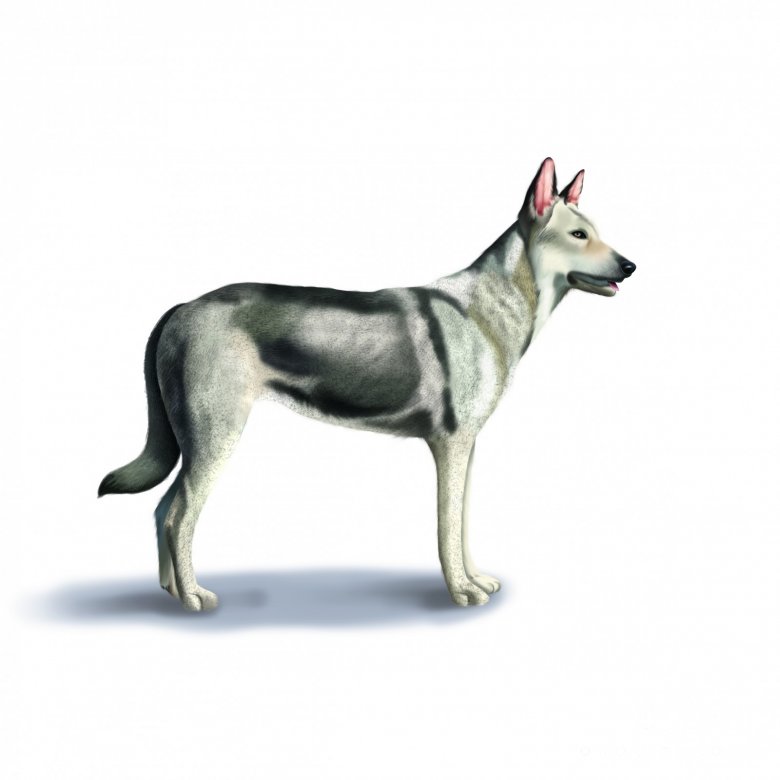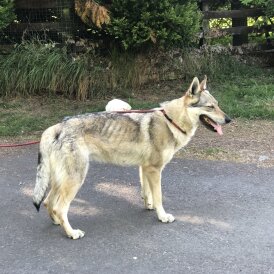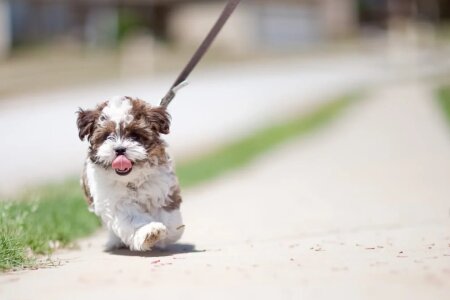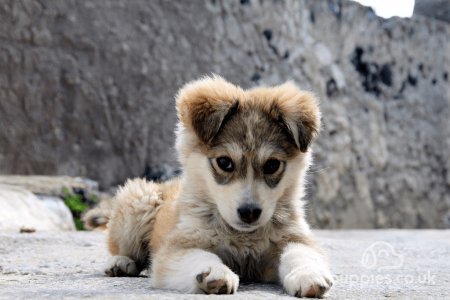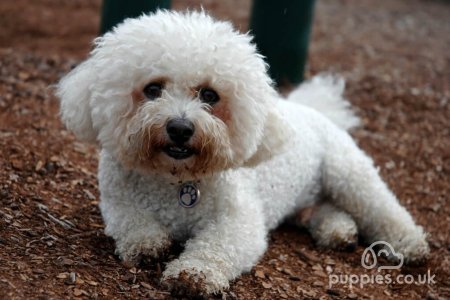Saarloos Wolfdog (European Wolfdog, Saarloos Wolfhound)
Overview
The Saarloos Wolfdog is a wolf-like dog that is energetic, independent and loyal. The Saarloos Wolfdog was produced by crossing a European Wolf and a German Shepherd; the result is large, powerful dogs that respond well to training. The Saarloos Wolfdog are intelligent, devoted and have a lot of energy. The Saarloos Wolfdog has a wild appearance with an athletic body, large ears and yellow eyes.
Physical Appearance
Saarloos Wolfdogs are large, athletic dogs that have many wolf characteristics. The breed has a large, wedge-shaped head with a long muzzle and a straight bridge to their nose. They have almond-shaped eyes that usually look alert and cautious and are often yellow in colour but can also be brown. The Saarloos Wolfdog moves quietly as a wolf does. The breed has large triangular ears that have rounded tips and are set level with the dog’s eyes.
Saarloos Wolfdogs is a strong breed with long muscular legs, big paws and a broad chest. Their tails are set low and are covered in hair.
During winter, Saarloos Wolfdogs have a ruff around their necks. They have a thick double winter coat which loses a lot of its density during summer. Saarloos Wolfdogs are usually wolf grey, white or red in colour.
How big do Saarloos Wolfdogs get?
Character Traits
The Saarloos Wolfdog is a highly intelligent breed that learns quickly and enjoys the one-to-one attention of training sessions. The breed is known for their natural behaviours which include being wary around people they do not know. The Saarloos Wolfdog has a strong desire to run away from people they do not know, which means they do not make a good guard dog. The Saarloos is an energetic breed that is high maintenance and needs a lot of time and attention. This is not a dog breed that will be happy spending the day on the sofa, they want to be out and about walking or jogging with you. Saarloos Wolfdogs love interactive games and do very well in dog sports.
Are Saarloos Wolfdogs intelligent? Yes.
Are Saarloos Wolfdogs affectionate? Yes.
Do Saarloos Wolfdogs have high or low energy levels? High energy levels.
Are Saarloos Wolfdogs loyal? Yes.
Are Saarloos Wolfdogs playful? Yes, they enjoy interactive games.
Are Saarloos Wolfdogs aggressive? No.
Are Saarloos Wolfdogs easy to train? Yes.
Are Saarloos Wolfdogs good guard dogs? No.
Ability to Socialise
A Saarloos Wolfdog is excellent with members of their family but tends to be wary of people they do not know. They get on well with other dogs and tend to prefer being in a home with another dog around so they feel like part of a pack. Saarloos Wolfdogs have a high prey drive so they will chase smaller animals without a second thought. Due to this, they should not be left alone with cats and smaller animals.
Do Saarloos Wolfdogs get along with other pets? They will get on well with pets they have grown up with but will chase cats and smaller animals.
Do Saarloos Wolfdogs get along with other dogs? Yes.
Are Saarloos Wolfdogs good with kids? Yes, they are excellent around children they have grown up with.
Are Saarloos Wolfdogs good with strangers? No, They will avoid strangers.
Lifestyle Suitability
Saarloos Wolfdogs need plenty of space and a large secure garden to roam in. Saarloos Wolfdogs are big, high energy dogs so they don’t suit living in an apartment. They are also not the best choice for first-time owners as they have specific needs and will do better with owners who are familiar with the Saarloos Wolfdog breed. A Saarloos Wolfdog has a strong pack instinct which means they do not do well if they are left on their own. This makes the Saarloos Wolfdog best suited to living in the countryside where they have plenty of space and someone is always at home with them.
Are Saarloos Wolfdogs good for first-time owners? No, they have very specific training and handling requirements so need an experienced owner.
Are Saarloos Wolfdogs hypoallergenic? No.
Are Saarloos Wolfdogs prone to drooling? No.
Are Saarloos Wolfdogs a good breed for apartment living? No.
Do Saarloos Wolfdogs shed a lot? Yes, they shed a lot throughout the year.
Do Saarloos Wolfdogs bark a lot? No.
Can Saarloos Wolfdogs be left alone at home? No, they are much happier when around people/ other dogs
Can Saarloos Wolfdogs handle the heat? No, they are better suited to colder temperatures.
Can Saarloos Wolfdogs handle cold temperatures? Yes.
Are Saarloos Wolfdogs sensitive to loud noises? Yes, they can be.
General Health & Health Issues
Saarloos Wolfdogs have a life expectancy of 10 - 12 years. They are generally healthy but can suffer from a few hereditary health issues. Many of these are issues that are seen in the German Shepherd breed. This includes:
Hip and elbow dysplasia - These are both painful conditions that affect the development of the hip/ elbow joints. Treatment usually involves pain relief, careful exercise, weight control and sometimes surgery.
Degenerative Myelopathy - This is commonly seen in German Shepherds due to their low backs. This disease affects the nerves in the lower spine and causes paralysis, weakness and incontinence. Symptoms tend to develop at around 9 years old, while the condition is not painful it can impact the dog’s quality of life. There is no cure but the vet can recommend things you can do to help keep your dog happy and comfortable.
Pituitary dwarfism - This is a hereditary condition that leads to a slower progression of growth and a stunted growth rate. This condition can not be reversed or cured and dogs with the condition rarely live past 5 years. Tests for hereditary dwarfism are available.
Hereditary Cataracts - Saarloos Wolfdogs are at a higher risk of developing cataracts which cause cloudiness in their eye(s), a loss of vision and pain. Cataracts can be treated and surgery is an option if necessary.
Progressive Retinal Atrophy (PRA) - This is a hereditary condition that develops slowly and results in blindness. There is no cure for PRA but dogs can learn to live without their eyesight.
Glaucoma - This is high pressure inside the eye, it is painful and can cause blindness if it is left untreated. While there is no cure for Glaucoma it can be treated with medication and eye drops.
Spondylosis - This is a degenerative spinal condition that often affects older dogs. Most dogs with this condition don’t show symptoms but the bone growth along the spine can be felt. The condition should be monitored and symptoms can be treated.
How long do Saarloos Wolfdogs live? - 10 - 12 years
Exercise & Play Time
The Saarloos Wolfdog is a high energy dog that needs at least 60 minutes of off-lead exercise per day. This needs to be in a secure environment where there are no small animals around as a Saarloos Wolfdog has a high prey drive. One of the best things you can do to keep your Saarloos Wolfdog happy is to get them involved with canine sports such as tracking, agility and flyball. These sports will not only help to burn off some of the Saarloos Wolfdog’s energy but will also keep them mentally stimulated. When not walking or training, this breed needs access to a large garden where they can play and roam.
How much exercise does a Saarloos Wolfdog dog need? At least 60 minutes per day
Do Saarloos Wolfdogs like water play? Yes.
Nutrition & Feeding
Saarloos Wolfdogs are large dogs that enjoy their food. They are not prone to weight gain but need plenty of daily exercise. Saarloos Wolfdogs do not have any breed-specific dietary requirements and do well with high-quality dry food. A Saarloos Wolfdog puppy needs between 280 - 560g of high-quality dry food each day, this needs to be split into 3-4 smaller portions. This is just an estimate and the actual amount will depend on a number of factors including the dog’s weight, age and activity level. Every dog is unique so it is important to have a personal dietary plan made to suit their individual needs.
Are Saarloos Wolfdogs prone to weight gain? No.
How much should I feed a Saarloos Wolfdog puppy? Between 280 - 560g of high-quality dry food depending on age and build.
How much should I feed an adult Saarloos Wolfdog? Between 350 - 500f of high-quality dry food depending on weight and activity level.
Care & Maintenance
Grooming: Saarloos Wolfdogs have a double coat that is thick, dense and sheds a fair amount. It’s best to brush their coat twice a week to remove any dead hair and keep the coat tidy. In Spring and Autumn, the Saarloos Wolfdog sheds a lot so increased grooming is needed to keep this under control. It is also important to check their ears regularly and clean them when needed. Their nails and teeth should also be checked periodically to ensure they are in good condition.
Emotional Care: The Saarloos Wolfdog is a pack animal that hates to be left alone. When they are with their owners this Wolfdog has an independent nature so doesn’t need constant reassurance. They do need to be kept busy with activities though, a Saarloos Wolfdog can quickly become bored and may start showing destructive behaviours around the house to relieve stress. Saarloos Wolfdogs are quick learners and they need regular, short training sessions to keep them focused and engaged.
History of the Saarloos Wolfdog
The Saarloos Wolfdog originates from the Netherlands and is a cross between a German Shepherd and a European Wolf. This is a relatively new breed that was originally developed by breeder Leendert Saarloos in the 1930s in an attempt to create a strong police dog breed. Despite being part wolf, the Saarloos Wolfdog was not a good fit for police work as the breed is reserved and cautious with no will to attack.
The Saarloos Wolfdog breed was officially recognised in 1975. Saarloos Wolfdogs proved to be popular as guide dogs and rescue dogs but are today mostly bred as family pets.
Interesting Facts About Saarloos Wolfdogs
The Saarloos Wolfdog was developed by crossing a European Wolf with a German Shepherd.
This breed makes a good rescue dog, therapy dog and guide dog but isn’t a good police dog.
The Saarloos Wolfdog is a relatively new breed that was first created in the 1930s.
Mr Leendert Saarloos created the Saarloos Wolfdog in the Netherlands.
Getting a Saarloos Wolfdog Puppy
If you are considering getting a Saarloos Wolfdog puppy, check out our buying guide for advice on buying a puppy. Be aware of scams and bad practices when looking for a puppy. If you think this is the right breed for you, take a look at our Saarloos Wolfdog puppies page. All breeders on Puppies have been vetted to ensure they are responsible.
How much does a Saarloos Wolfdog cost to buy? £600 - £1600
How much does a Saarloos Wolfdog cost to feed? £40 per month
How much does insurance for a Saarloos Wolfdog cost? £35 per month
This breed is still quite rare in the UK so you may need to join a waiting list for a puppy. Another option is to adopt a Saarloos Wolfdog. The best place to start your search is at your local dog rescue centre but the following associations may also be able to help:
Rehome a Saarloos Wolfdog with the Dogs Trust






